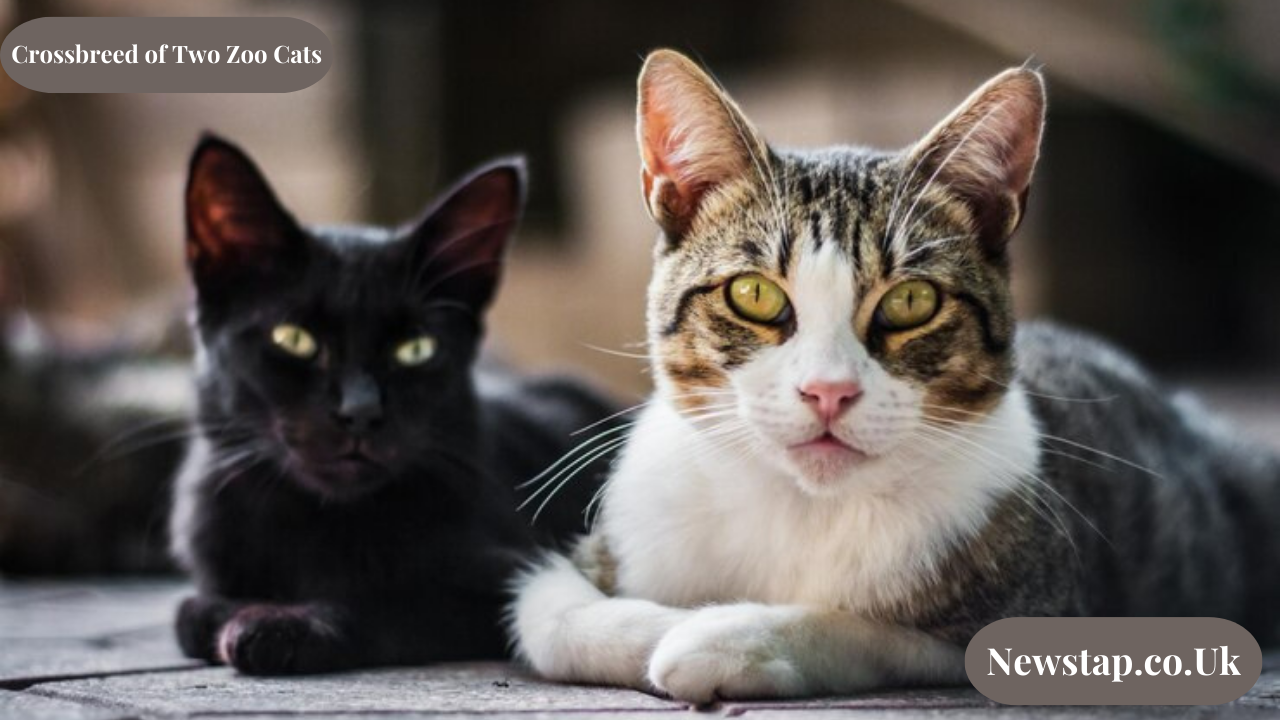The idea of a “crossbreed of two zoo cats” is a fascinating topic that explores the potential of hybrid feline species created by breeding two different types of large cats found in zoos. The purpose behind such crossbreeding can range from scientific curiosity and genetic research to conservation efforts aimed at protecting endangered species. This article delves into the science, challenges, ethical considerations, and examples of famous crossbreeds of zoo cats, as well as answers some commonly asked questions on the subject.
What Is a Crossbreed of Two Zoo Cats?
A crossbreed, also known as a hybrid, occurs when two different species or subspecies within the same genus breed, resulting in offspring that carry genetic traits from both parents. In the context of zoo cats, hybrid cats are typically the result of breeding two big cat species, such as lions and tigers, to create unique offspring that exhibit characteristics from each parent.
In zoos, these hybrid cats are not only fascinating for visitors but also valuable for genetic research, as they can provide insights into the genetic diversity and adaptability of big cats. However, hybrid cats often face specific health and behavioral challenges, making their breeding a topic of considerable ethical debate.
Famous Examples of Crossbreeds of Zoo Cats
There are several well-known examples of big cat hybrids, each with distinctive traits that have made them famous in zoos worldwide. Here are a few of the most notable crossbreeds:
1. Ligers (Lion and Tiger Hybrid)
The liger, a crossbreed between a male lion and a female tiger, is one of the most famous zoo cat hybrids. Ligers are known for their immense size, often growing larger than either parent species. They exhibit physical traits from both lions and tigers, such as the mane of a lion (though usually less prominent) and the faint stripes of a tiger.
2. Tigons (Tiger and Lion Hybrid)
Tigons are the result of breeding a male tiger with a female lion. Unlike ligers, tigons are typically smaller than either parent species and display unique coat patterns that mix lion and tiger features. Tigons are less common than ligers, partly due to the reproductive challenges involved in this specific pairing.
3. Leopons (Leopard and Lion Hybrid)
Leopons are hybrids of a male leopard and a female lion. These hybrids have a body structure similar to a lion but display the distinctive spotted coat pattern of leopards. Leopons are relatively rare and are bred in only a few specialized facilities worldwide.
4. Jaglions (Jaguar and Lion Hybrid)
Jaglions are a crossbreed between a jaguar and a lion, and they exhibit characteristics from both parents, such as a powerful build and the patterned coat of a jaguar. Jaglions are rare, and most examples come from selective breeding programs in zoos.
Why Are Crossbreeds of Zoo Cats Created?
The crossbreeding of zoo cats serves several purposes, although it remains controversial. Here are some reasons why zoos and breeding programs create hybrid cats:
1. Scientific Research
Crossbreeding cats provides unique opportunities for genetic research. By studying hybrids, scientists can better understand the genetics, physiology, and behaviors that differentiate big cat species. Such research may help in the conservation and management of endangered species by uncovering information about gene diversity and adaptability.
2. Educational Value and Public Interest
Hybrids like ligers and tigons attract public interest and educate visitors about the diversity of big cat species. Zoos may use these animals to engage the public in discussions about wildlife conservation and the importance of protecting natural habitats.
3. Conservation and Genetic Diversity
Although controversial, some proponents of hybrid breeding argue that it could help increase genetic diversity among endangered species. In theory, hybrid cats might serve as genetic reservoirs, though this approach is generally not favored in mainstream conservation.
The Challenges and Ethical Considerations in Crossbreeding Zoo Cats
While crossbreeding zoo cats can lead to intriguing results, it also comes with significant challenges and ethical concerns. Here are some of the primary issues associated with hybrid cat breeding:
1. Health Problems
Hybrids often face a range of health issues due to genetic incompatibility. Ligers, for example, may suffer from issues related to their size, such as heart and joint problems, which can shorten their lifespan. Tigons may inherit the vulnerability of both species, resulting in increased susceptibility to disease.
2. Behavioral Challenges
Hybrid cats may exhibit unpredictable behaviors due to the mixed genetic traits they inherit. They may not fully adapt to the social structures of either parent species, leading to difficulties in socialization and potential aggression or stress.
3. Reproductive Limitations
Many big cat hybrids are sterile, meaning they cannot produce offspring. This is especially common in male hybrids, which limits the possibility of establishing a self-sustaining hybrid population. Female hybrids are sometimes fertile, but breeding them can be complex and risky.
4. Ethical and Conservation Implications
Conservationists often argue against crossbreeding because it does not contribute to the preservation of purebred endangered species. Resources spent on hybrids could be directed toward efforts to protect these cats in the wild, where they face habitat loss, poaching, and other threats.
The Genetic Science Behind Crossbreeds of Zoo Cats
Understanding the genetics of hybrid cats helps explain why certain traits appear in crossbreeds and why some hybrids face health issues. When two species are closely related, such as lions and tigers (both members of the Panthera genus), they can produce offspring, but the genetic differences may still lead to abnormalities.
For instance, lion and tiger DNA is similar enough to create ligers and tigons, but the offspring often suffer from issues like oversized growth (in ligers) or reduced size (in tigons). These traits arise because each parent species has evolved specific adaptations that may not align in a hybrid.
Legal Status and Regulations on Crossbreeding Zoo Cats
Many countries have strict regulations on breeding hybrid big cats, and some have outright banned the practice. Zoos and breeding facilities that produce hybrids must often obtain special permits and follow strict guidelines to ensure animal welfare.
The ethical debate surrounding hybrid cats has led to increased scrutiny, and some zoos have voluntarily stopped crossbreeding big cats. Many conservation organizations focus on preserving the natural species, arguing that hybrid animals may detract from these efforts.
FAQs: Crossbreed of Two Zoo Cats
1. Are hybrid zoo cats like ligers and tigons natural?
Hybrid zoo cats do not occur naturally in the wild due to geographical separation and behavioral differences between species. However, they can be bred in controlled environments like zoos.
2. Are ligers and tigons fertile?
Male ligers and tigons are typically sterile, while some females may be fertile. However, breeding hybrid females can be challenging and is generally not practiced.
3. Why do ligers grow so large?
Ligers grow larger than either parent species due to a phenomenon called “growth dysregulation,” where genes controlling growth are not balanced between the two parent species.
4. Do hybrid cats face health problems?
Yes, many hybrid cats face health issues, including joint pain, heart problems, and increased susceptibility to illness due to genetic incompatibility.
5. Are hybrid cats used in conservation efforts?
Hybrid cats are generally not used in conservation efforts, as they do not help preserve the genetic purity of endangered species. Conservationists prefer to focus on protecting natural populations.
Conclusion
The crossbreeding of two zoo cats, such as creating ligers, tigons, and other hybrids, provides a unique window into genetics, adaptation, and the evolutionary paths of big cats. However, these hybrids often face significant health challenges and behavioral difficulties, raising ethical questions about the value of hybrid breeding. Although hybrid cats fascinate visitors and contribute to scientific knowledge, most conservationists and animal rights advocates argue that efforts should focus on preserving wild populations and supporting the survival of purebred species in their natural habitats. The debate continues, but the ethical and practical considerations in breeding hybrid zoo cats remain complex and nuanced.
Also Read: western horse saddles



